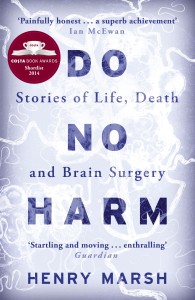I was asked at a dinner if Paracetamol was a safe pain killer to take. My friends were so shocked to hear that 8 tablets might be enough to kill: yes 8 of the 500mg ones!
Cordelia
Cordelia did not fit into the usual overdose teenager profile. I felt it safer to admit her to our adolescent unit.
She was from an upper class family. Her mother was a Lady, but was in her second marriage. Cordelia was from a previous marriage although little was known of her father. Mother provided very little information about the father except that Cordelia never knew him. My charge nurse whispered to me that in fact mother told him Cordelia was born outside wedlock.
At first, I thought it might be difficult for Cordelia to fit in with our adolescent unit crowd. On the contrary, possibly because many of the anorectic girls came from middle class families, she settled in and befriended the girls in no time, mixing in extremely well, too well perhaps.
I later discovered that the girls loved her because she ‘helped’ them. Yes, she did, by cleaning their plates.
Her mother was still in Verbier with her husband on a skiing holiday. As Cordelia’s life was not medically in danger, mother decided to finish her week of skiing instead of rushing back. She overdosed on her mother’s homeopathic medication as soon as mother and stepfather left for their vacation. Luckily the maid discovered the empty bottles and got her admitted to the paediatric ward, before I transferred her over to the adolescent unit.
Many overdoses happened when parent or parents were away for whatever reason. The worst case I never had a chance to see or treat. A girl took a massive dose of paracetamol and left a note to her single mother, who was spending the night with her new boy-friend and never came home until the next afternoon. By the time this mother got her daughter into hospital, it was rather too late for the drip and the girl died a very painful death. I believe some responsible chemists have now put a limit on the amount they sell to teenagers.
Friday night I had a call from the same junior who was in trouble for prescribing too little benzodiazepine for the alcoholic.
“Cordelia took a massive overdose of Paracetamol, and we found the empty packets. We could not check blood level because she is afraid of needles.”
“But she is not afraid of razor blades, from the look of the cuts on both her wrists!”
Having dealt with so many overdose and self-harm cases over the years, I probably sounded blatantly unsympathetic.
“How did she get so much Paracetamol anyway?”
“The Anorectics helped get them for her.”
She ate their food, and they got her what she needed to kill herself! Nice deal.
Is this what friendship is about? Helping Anorectics not to have to eat? Helping Cordelia to commit suicide? Getting even!
“If she really swallowed down that many packets, her liver will be damaged soon. What should I, mmmm, we do? Her parents are not here to give parental consent. It is so late or in fact so early in the morning, that it would be tricky to get hold of them. Would we be contravening her human rights if we were to drip her against her will?”
“Where is she?”
“Acute Medical as the Paediatric Ward is not geared to deal with such a case. My friend is on call at Medical, so I asked for a favour and got her transferred there. Sorry!”
“Brilliant! There is nothing to be sorry about. We have a life to save here!”
“My friend at Medical said she will need to drip her soon or her liver would be damaged and she will die. She said she will drip her if you OK it and blood level will be checked at the same time.”
Smart girl. We need more junior doctors like her to save lives!
“They will make sure she won’t be able to rip the drip off. My friend said she needs the consultant to OK it and it is going to be you instead of their own consultant as she is primarily a psychiatric patient.”
I told her that ASSAULT is always a lesser crime than HOMICIDE, even culpable homicide and I would OK it if they accept my authorisation over the phone. I would come in to sign the notes as soon as possible. She passed the phone to her friend who sounded very efficient and professional.
We are still at an age when saving lives is our number one priority, human rights or whatever.
Cordelia was saved. Blood level result proved that we or the Acute Medical Team was right in wanting to drip her ASAP.
But this was a small hospital, word got round quickly.
Was I wrong to force treatment on a patient without parental consent?
What could I say? If I had not done what I did, the patient would have died. In any case, I was in loco parentis as she was not an adult and her parents could not be contacted. In the worst case scenario, I could have been charged with ASSAULT and that in fact would have been far less serious than death and a culpable homicide offence, as I explained to my Junior on the night of the incidence.
What about the deal between Cordelia and her anorectic friends? Both parties might be guilty of manslaughter!
Extracted from the following book:
The Cockroach Catcher II: Attempted Living
Cockroach Catcher-Seven Minute Cure
The Cockroach Catcher II: Attempted Living---Daimler and The Vagabond
The Cockroach Catcher II: Attempted Living---He Did Not Show
The Cockroach Catcher II: Attempted Living---Life is a Beach
The Cockroach Catcher II: Attempted Living---Incestuous Failure
The Cockroach Catcher II: Attempted Living.






